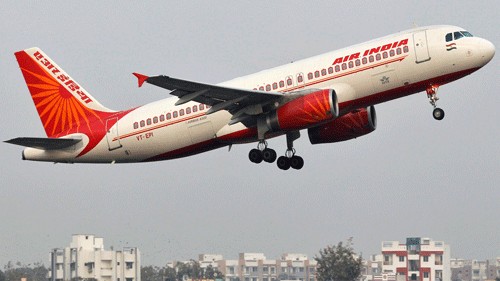
Representative image
Credit: Reuters File Photo
Bengaluru: Erratic monsoon, end of holiday season and the roof collapse at Delhi’s Terminal-1, have all told on the flow of domestic air passenger traffic, which has seen a sequential decline of 3.7%.
According to a report released by the research and ratings agency, ICRA, on Tuesday, June saw a domestic air passenger traffic of 1.32 crore, down from the 1.37 crore recorded the previous month.
The agency attributed this sequential decline to the deluge seen in parts of the country, the suspension of arrivals and departures from Terminal 1 of Delhi’s Indira Gandhi International Airport and of course, the reopening of schools and colleges.
Despite this drop, the numbers registered in June market a 6.3% improvement year-on-year (YoY) and were higher by 10% than pre-Covid levels of 1.2 crore in June 2019. The traffic was 1.24 crore in June 2023.
For the first quarter of the current fiscal year (April-June) the traffic at 4.02 crore saw a 4.4% rise over the corresponding quarter in the previous year at 3.85 crore.
Likewise, the capacity utilisaton of the airlines’ capacity rose by 7% YoY but receded by 3% sequentially. It is estimated that the domestic aviation industry operated at a passenger load factor (PLF) of 90% in June 2024 against 91% in June 2023 and 89% in June 2019 (pre-Covid).
The agency highlighted the elevated aviation turbine fuel (ATF) prices, failures of engines manufactured byPratt and Whitney (P&W), depreciation of the rupee, over pre-Covid levels as some of the challenges faced by the industry in the current fiscal.
The report has mentioned the bulk recall of the engines globally by P&W, other existing issues with the original equipment manufacturer’s (OEM’s) engines and expected the testing by P&W to take longer, around 250-300 days.
This, it estimated, will result in increased operating expenses towards the cost of grounding, increased lease rentals due to additional aircraft being taken on lease to offset the grounded capacity, rising lease rates and lower fuel efficiency (due to replacement by older aircraft taken on spot lease), which will adversely impact an airline’s cost structure.
"The industry witnessed improved pricing power, reflected in the higher yields (over pre-Covid levels) and, thus, the revenue per available seat kilometre, cost per available seat kilometre (RASK–CASK) spread of the airlines. The momentum in air passenger traffic witnessed in FY24 is expected to continue into FY25, though further expansion in yields from the current levels may be limited," said the report.